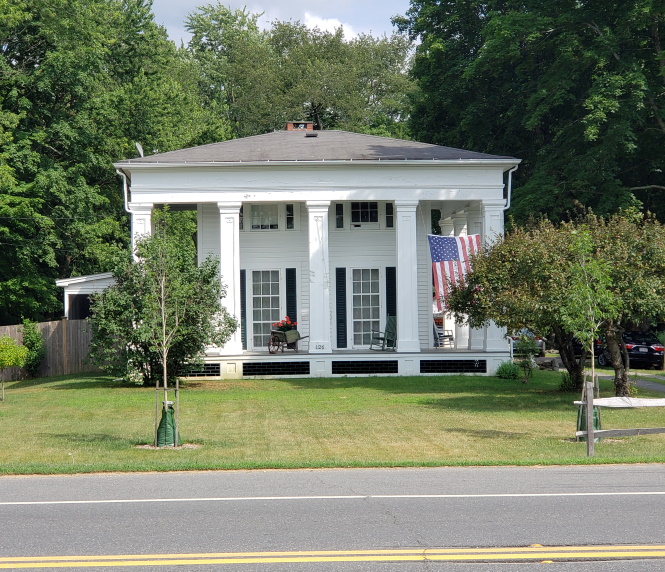Theodore Sedgwick House (1761)

Although it now has a nineteenth-century Greek Revival appearance with eleven columns, the house at 126 Main Street in Sheffield dates back to 1761. In the 1760s, the house was rented by Dr. Lemuel Barnard, a physician who was one of the signers of the Sheffield Declaration, which was drawn up at the home of John Ashley in 1773. Seen as a predecessor of the Declaration of Independence, the Sheffield Declaration (or Sheffield Resolves) was a list of grievances against the British government and an outline of the basic rights of citizens. In 1768, David Ingersoll sold the house to Theodore Sedgwick, a Sheffield lawyer (born in West Hartford, Connecticut) who had written the text of the Sheffield Declaration. In 1781, he and Tapping Reeve represented Mum Bett, an enslaved woman at the house of John Ashley, who sued for her freedom under the Massachusetts constitution of 1780, part of which stated that “All men are born free and equal.” She won her freedom and took the name Elizabeth Freeman. Sedgwick was a delegate to the Continental Congress and would go on to serve as in the U.S. House and Senate. He was the forth Speaker of the House of Representatives (1799-1801) and served on the Massachusetts Supreme Court from 1802 until his death in 1813. In 1785, he sold the house at 126 Main Street to Elisha Lee, also an attorney, who was appointed the first postmaster of Sheffield in 1784.